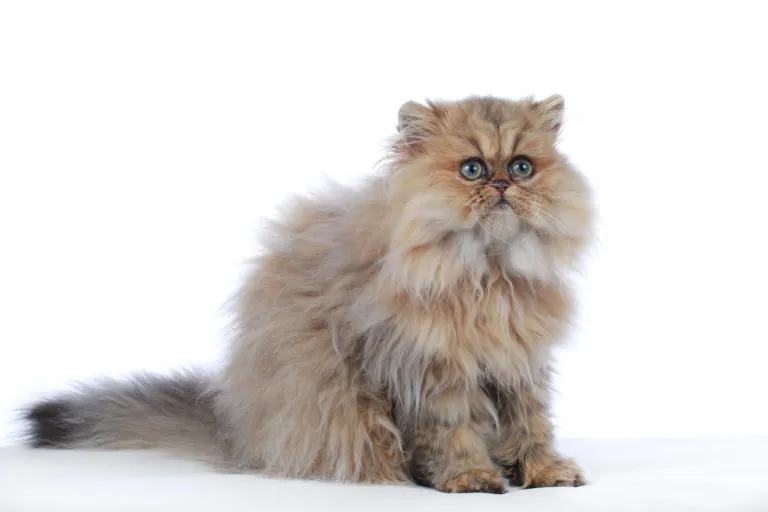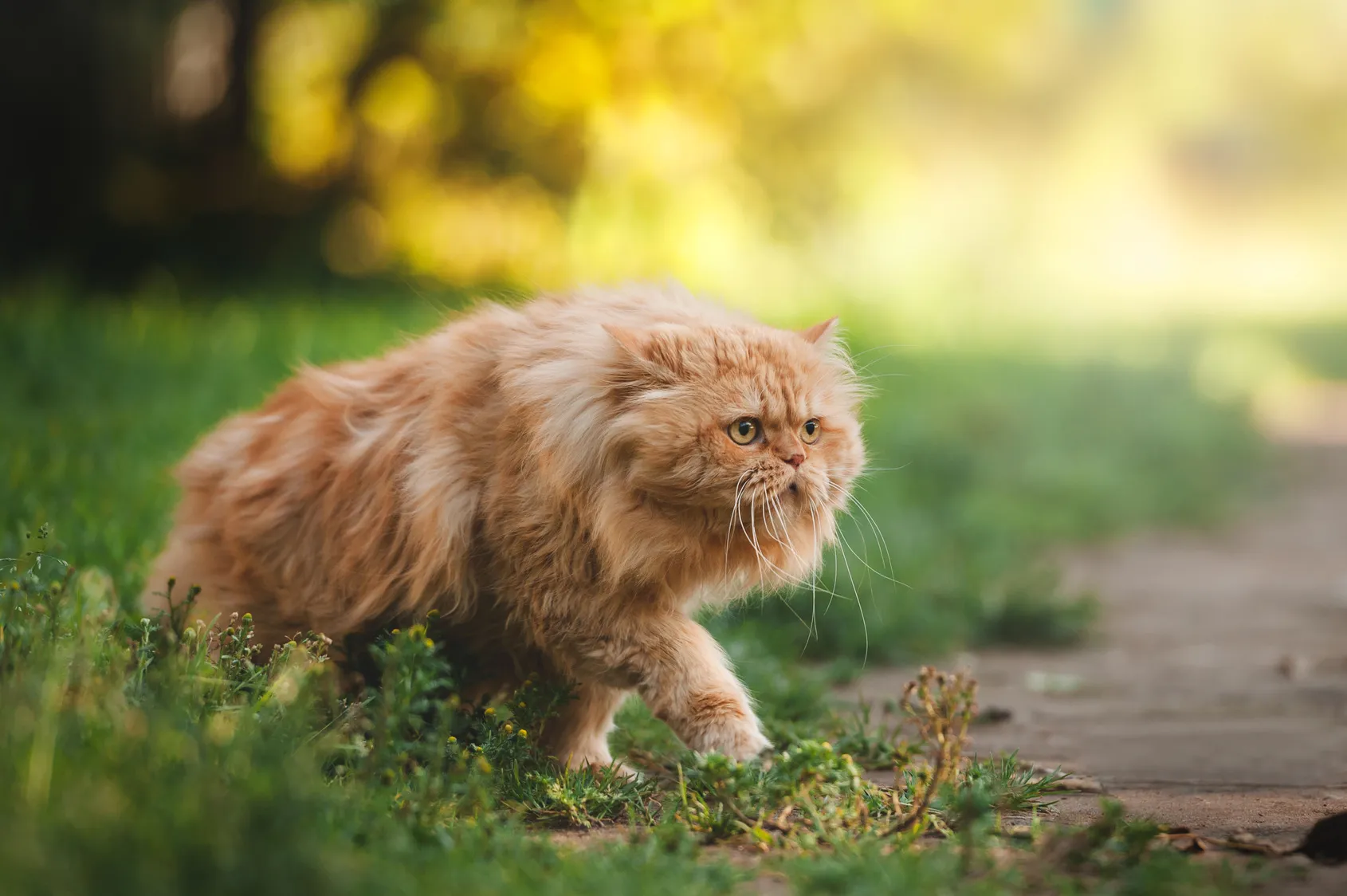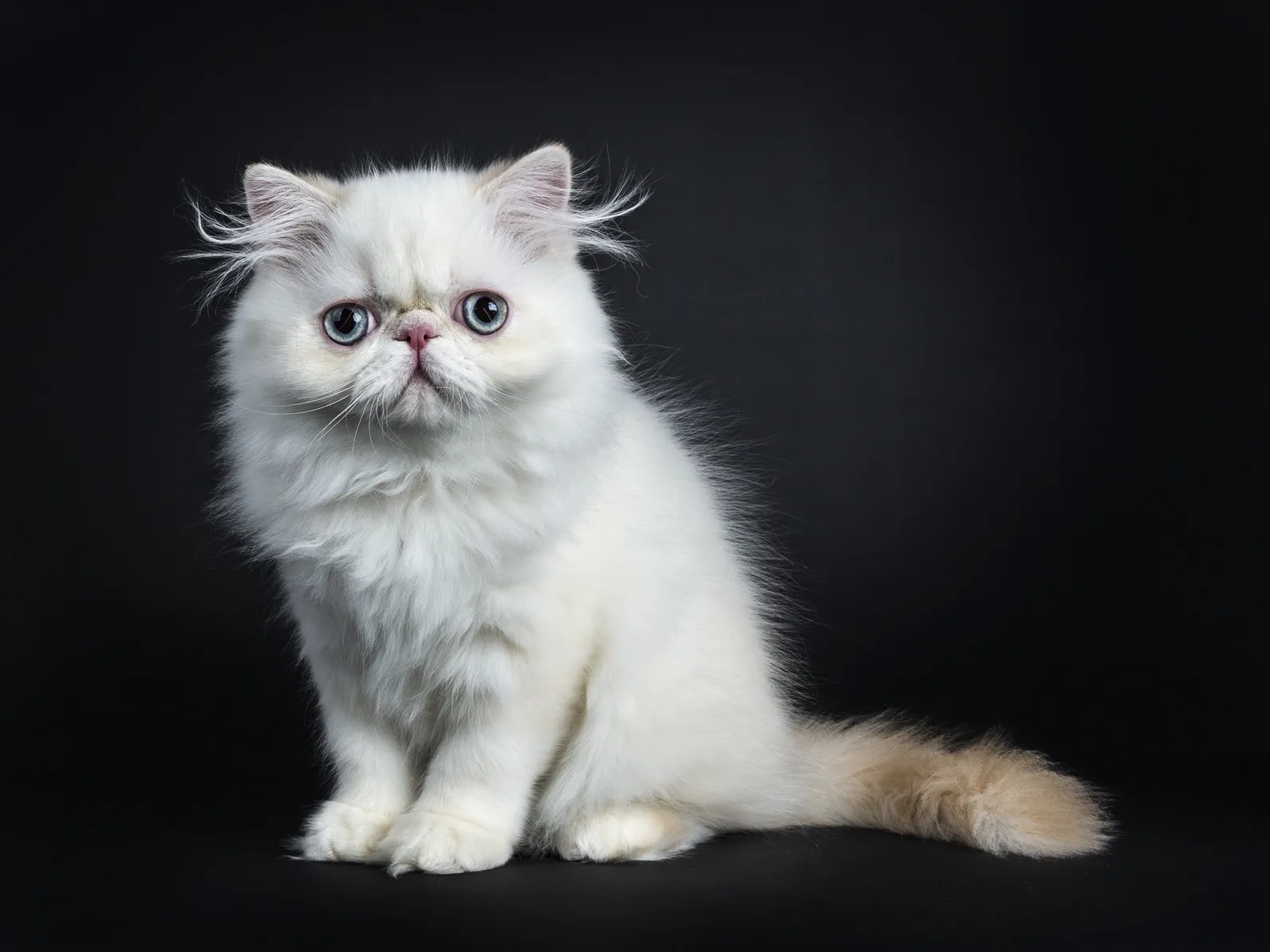Maine Coon
The Maine Coon has now become one of the most popular cat breeds in the world and is enjoying increasing popularity in Ireland, too. This is probably thanks to its authenticity, robustness and excellent character.
The fluffy Persian is one of the most popular cat breeds in existence. It is surprising that these cats called “Gorbe-ye irāni” (Iranian cat) in Persian are one of the oldest cat breeds, although the Persian as we know it today doesn't even come from the Orient.

© absolutimages / stock.adobe.com
Up until now, the assumption has been that Persians originate from long-haired cats from the Orient. In the 17th century, long-haired cats were imported to Europe for the first time – these cats are said to have laid the foundation for breeding the Persian. However, the original Persians no longer have much in common with the present-day pedigree cats. This isn’t surprising, since the most recent scientific findings suggest that the ancestors of the Persian cats we know came from Russia. Genetic analysis of the Persian genome shows that they originate from long-haired Russian domestic cats and that there is no relation to the Asian lineage.
Interestingly, the name Persian only became established when the first breeding associations were founded at the start of the 20th century. The term “Angora” had primarily been used up until then for long-haired cats. Since then, the breed standard of today’s Persian has changed several times. With time, more prominence has been given to the forehead being rounder and the cranium shorter, whilst the fur has become more abundant and appears plusher due to there being more undercoat. With the Persian’s increasing popularity, mass breeds were established mainly in the US, pairing cats without any consideration for health issues and focusing on an ever more extreme breed image: a pushed-back nose with watery eyes and a tendency to develop inflammation in the nose and throat area, as well as complaints when eating food and problems with breathing made Persian cats known for torture breeding. But what does torture breeding actually mean – and should modern Persians from the 21st century also be known as a torture breed?
 © anya_titanya / stock.adobe.com
© anya_titanya / stock.adobe.com
One of the prominent features of the Persian is its long, fine fur with plenty of undercoat. Not every cat with long fur is a Persian though – in order to satisfy the breed standard, a Persian needs to show much more than just long fur!
The appearance of the Persian is defined by three different breeding associations, which prioritise different characteristics. A Persian generally has to be medium to large in size. Males weigh up to 7kg and females up to 6kg. The body is supported by short, stocky legs. Tufts of hair between the toes on the round paws are highly desirable!
Along with the long fur, the Persian’s face is also a typical feature of the breed. The broad round head has a very short nose and round ears, ideally with tufts of fur. The bridge of the nose has to end between the eyes, whilst the stop may not be positioned above the upper eyelid or below the lower eyelid. This gives the Persian its typical appearance, though can lead to certain health issues and has caused severe criticism of extreme Persian breeding – more on this later. There are breeders who prefer the old breed standard with a long nose for this reason, although this no longer corresponds to the current breed standard.
Almost all known colours are found with Persians. Monotone cats can be black, white, red or blue, whilst chocolate, lilac and cream are also found. That’s not all: bicolour and tricolour (tortoiseshell) Persians are just as popular as those with the exotic smoke colour, with which a large part of the fur is monotone whilst the roots stay silver-white. If only the tips are monotone and the majority of the hair is silver-grey, this is the shaded tone.
Persians share a breed standard with Exotic Shorthairs and Colourpoints and only differ in the length, texture and colour of their fur. As a result, the Exotic Shorthair breed was recognised in 1933 in one of the biggest feline associations in Europe. It matches the Persian in terms of physique and character, though has short teddy bear fur. The Colourpoint known as the Persian with a mask or Himalayan results from pairing Siamese and Persian cats. They comply with the Persian breed standard though have the Siamese point colouring. Every fur colour can be point. Black and white as well as the diluted blue and cream versions are particularly common, as well as chocolate and cinnamon and the lighter versions lilac and fawn.
Persians are very calm cats perfect to be kept alone indoors due to their lack of desire for freedom. This characteristic has led them to becoming one of the most popular cat breeds in Germany! Persians love cuddling with their family and are very affectionate cats.
Nevertheless, Persians remain predators at heart although they are considered very even-tempered. Even calm and rather lazy animals should be given the opportunity to explore, climb and play. A feline-appropriate home is a must to keep your cat mentally fit and happy without having to do extensive acrobatics.
For instance, a scratching tree should form part of every household with a cat. Even if they don’t scale any heady heights, scratching is part of the behaviour of all cats, which they need to do in order to get rid of the dead tips of their claws. They mark their territory by scratching and spread a “feel-good odour” that we cannot perceive through the scent glands on their paws. Without a scratching tree or just a post, even the most patient cats will fall back on furniture and the corners of rooms. A scratching tree isn’t just for scratching though and offers your cat the opportunity to climb and an excellent lookout platform. Chilled-out cats love watching the world from above! Beds on radiators or secured windowsills serve a similar purpose. Your feline friend will definitely also enjoy spending time outdoors in a cat-proof garden or a balcony with a cat net.
As previously mentioned, there is the question of whether the Persian should still be defined as a torture breed. It is also forbidden to breed vertebrates if it is known that the offspring could be affected by harmful hereditary behavioural disorders. In 1999, a report by several experts investigated the issue more closely. The document they created touches upon individual breeding forms with dogs, cats, rabbits and birds and the impact on their health. Along with breeding focused on hairless cats, ear muscles bent forwards or backwards, short or no tails, deafness due to breeding white cats and dwarfism, the brachycephaly known to affect Persians (‘brachis’ = short and ‘cephalus’ = head), a deviation from the head shape with a snub nose, is also mentioned. Although health should be the priority, there is still to this day no clear regulation regarding breeding prohibition across Germany or Europe.
Thanks to committed breeders who prioritised the health of their animals, Persian cat breeding has now moved away from the panorama of mass breeding in the 1970s. Despite their problematic breed history, Persians are relatively healthy if kept in good conditions with a healthy diet and regular grooming. There are a few exceptions: the breed tends to develop polycystic kidney disease (PKD) as well as progressive retinal atrophy, whereby the retina becomes distorted, which can result in total blindness. Persians can also be affected by hypertrophic cardiomyopathy, which many cat breeds can suffer from.
All these diseases are hereditary and indicate the importance of intelligent breeding selection. Professional breeders have the animals they work with and their offspring tested regularly and at an early stage for hereditary diseases and exclude affected animals from the breeding process. This applies for kidney cysts in particular. The symptoms only come to the fore in later life, but by then many animals deployed for breeding have already passed on the dominant gene to their offspring… Thankfully though, an ultrasound scan can confirm polycystic kidney disease from the age of 10 weeks. Hence, committed breeders can exclude animals that are affected from the breeding process early on and thereby prevent offspring suffering from the diseases too. Cats with cysts always pass them on to their offspring! A cardiac ultrasound is the means of choice to diagnose hypertrophic cardiomyopathy. Although there is no cure, an early diagnosis does offer the possibility of treatment in order to give affected cats a longer life!
 © Nynke / stock.adobe.com
© Nynke / stock.adobe.com
As you can see, cats deployed for breeding should be regularly examined by a vet in order to rule out hereditary diseases and prevent them being passed on to offspring. If you purchase your cat from a breeder, you should insist upon seeing examination results of the parent animals. Please try to avoid unprofessional breeders offering pedigree cats without the paperwork at a bargain price. Such breeders generally give little importance to healthcare provision, species-appropriate housing and the diet of their animals – which can later prove expensive if your cat suffers from several hereditary diseases…
The breeder of your choice should be a member of a breeding association that regularly monitors its cats’ housing conditions, ensures intelligent pairing of individual cats and attempts to rule out hereditary diseases. Of course, this comes at a cost. A Persian can cost up to 800 euros, whilst cat lovers often have to cough up 1,500 euros for breeding cats. However, for this price you aren’t just paying for the cat itself, but the commitment and knowledge of the breeder too. You’re investing in the time devoted to your cat developing a balanced character and learning all feline essentials from its mother and siblings before entering a new home at the age of 12 weeks at the earliest.
Although the Persian’s cuddly fur provokes many cat lovers, it shouldn’t be forgotten that long-haired cats are high-maintenance! To prevent the fur from matting, Persians should ideally be thoroughly brushed once a day. Once Persian fur has matted, often only the vet can help. Don’t worry though, because fur that has to be shaved off in emergencies soon grows back! During the moulting period, many Persians lose a huge part of their fur despite regular combing and brushing. Malt paste and cat grass can help to naturally get rid of swallowed hairs and prevent constipation.
Due to their short nose, Persians often need additional help to clean their eye and nose area. A damp cloth is generally sufficient – camomile tea and such can further irritate the eye area. The Persian’s flat face is also accompanied by a special ingestion of food, with this breed primarily using its tongue. Food with a mushy texture is often easier for them to eat than big chunks of meat.
Apart from this, there’s one thing to bear in mind when choosing the right food for a Persian: the higher the quality, the better the food. Cats need plenty of protein in their diet, so meat should be the main ingredient of a cat food. Wet food is generally preferred to dry – not just because of the usually better composition, but due to the high moisture content too. Our cats are “desert animals” according to their nature. They don’t have a great need to seek out their water bowl and by nature drink little. They consume most of the fluid they need through their food.
Persians are one of Europe’s most popular cat breeds with good reason. With the right choice of breeder, a little grooming and a healthy diet, you too can have plenty of fun with a cuddly feline friend. We wish you and your Persian all the best!
The Maine Coon has now become one of the most popular cat breeds in the world and is enjoying increasing popularity in Ireland, too. This is probably thanks to its authenticity, robustness and excellent character.
Neva Masquerade – a mysterious name for a mysterious thing of beauty! The Neva Masquerade is the point variation on the Siberian cat and shares many characteristics with this breed.